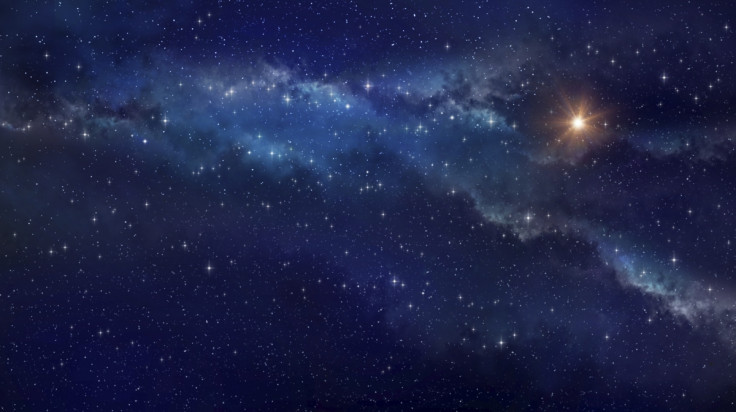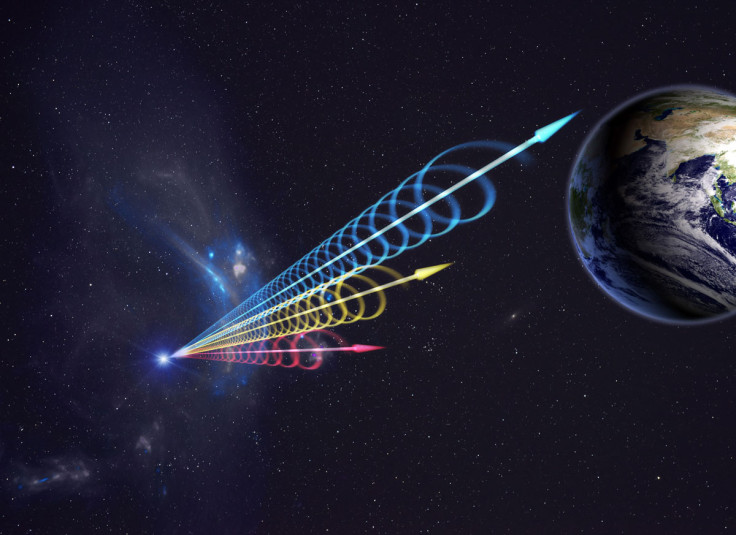Fast Radio Bursts: Source of mystery radio pulses from outer space detected - it's not aliens

The source of the mystery radio pulses emanating from six billion light years away may have finally been discovered, and, despite widespread speculation, they do not appear to be signals from aliens in the distant universe. Instead, it appears Fast Radio Bursts (FRBs) come from a highly magnetised region of space – possibly an area of a recent supernova or an active star-forming nebula.
FRBs are extremely short, bright eruptions of radio waves. They were first detected over a decade ago and since then have baffled scientists observing them. Other than appearing to come from the very distant universe, details of how, when and where they formed are a complete mystery. They come from random directions in the sky and while only 16 have been documented, astronomers believe there may be thousands of these events taking place every day.
Now, an international team of scientists has examined 650 hours of data from the National Science Foundation's (NSF) Green Bank Telescope (GBT) and come across an FRB that was different to all the rest. This specific radio burst provided a "tantalising extra polarisation element" never seen before. The findings were published in the journal Nature.
The new radio burst has been termed 'FRB 110523'. It was found using highly specialised software that allowed the researchers to examine the bursts. Normally the extremely short signals get "smeared out" during their journey through space. This is called 'dispersion delay' and is often used to work out distance in radio astronomy – the more dispersion, the further away the object. FRB 110523 is estimated to have come from six billion light years away. The dispersion also, however, masks the presence of an FRB within radio data.
To combat this problem, the software developed by astronomers allowed them to counteract the effects of dispersion by restoring the burst to its original appearance. By doing this, they found over 6,000 possible FRBs – all of which were inspected by the team. FRB 110523 was the only one to provide information about its source.

"Hidden within an incredibly massive dataset, we found a very peculiar signal, one that matched all the known characteristics of a Fast Radio Burst, but with a tantalising extra polarisation element that we simply have never seen before," said Jeffrey Peterson, from Carnegie Mellon's McWilliams Center for Cosmology. Polarisation is a property of electromagnetic radiation and shows the orientation of the wave.
Astronomer Kiyoshi Masui said: "This tells us something about the magnetic field that the burst travelled through on its way to us, giving a hint about the burst's environment. It also gives the theorists a bit more to work with when they come up with explanations for these bursts. We now know that the energy from this FRB passed through a dense, magnetised region shortly after it formed. This significantly narrows down the source's environment and type of event that triggered the burst."
The finding also means the FRB must have come from another galaxy and that it passed through two distinct regions of ionised gas. One of these was very close to the source of the burst (within 100,000 light years). Only two things could have left such a strong imprint on the FRB – a nebula surrounding the source or the environment at the centre of the galaxy.
"The detection in this instance of magnetisation and scattering that are both local to the source favours models involving young stellar populations such as magnetars over models involving the mergers of older neutron stars, which are more likely to be located in low-density regions of the host galaxy," the team wrote.
Masui added: "Astronomers in particular, we love a mystery. That's the compelling thing about these. You have these phenomena that are very energetic, appear to be coming from half-way across the universe, and we just have no idea what they are. We're starting to uncover clues about the environment of the sources.
"Taken together, these remarkable data reveal more about an FRB than we have ever seen before and give us important constraints on these mysterious events. We also have an exciting new tool to search through otherwise overwhelming archival data to uncover more examples and get closer to truly understanding their nature."
© Copyright IBTimes 2025. All rights reserved.





















